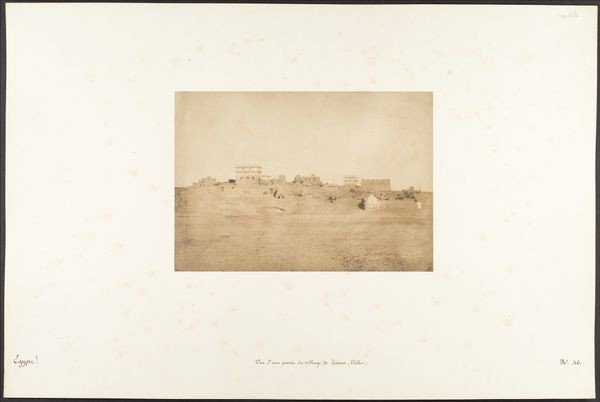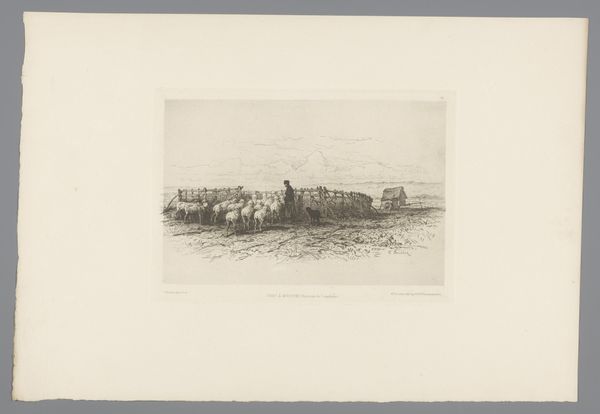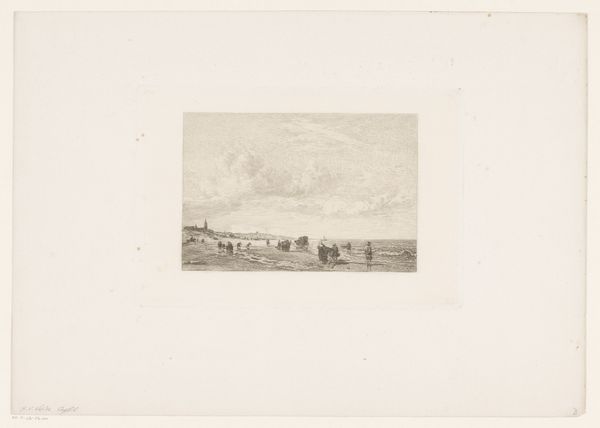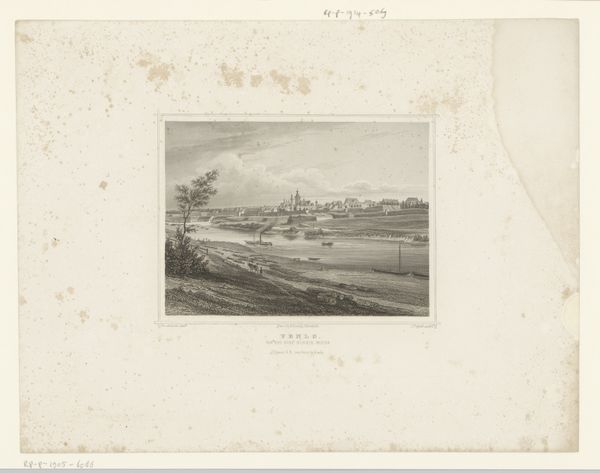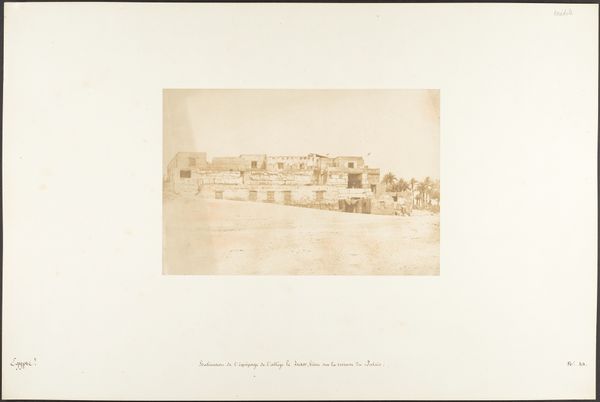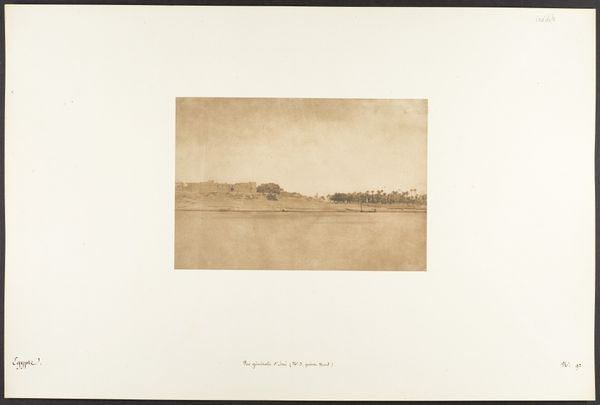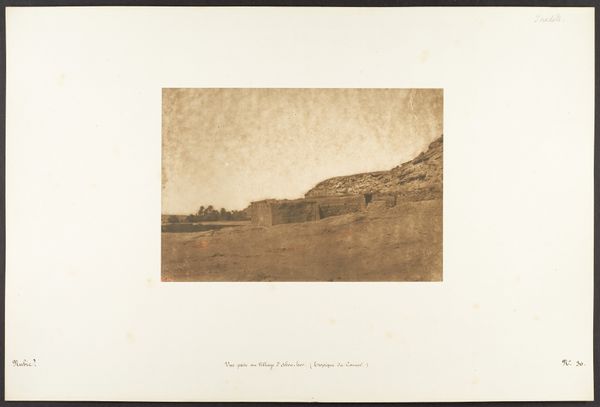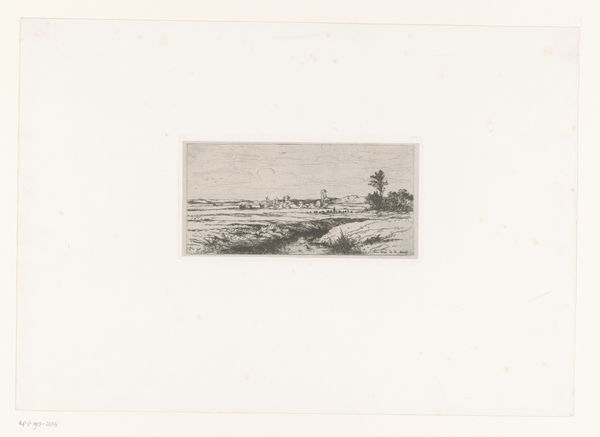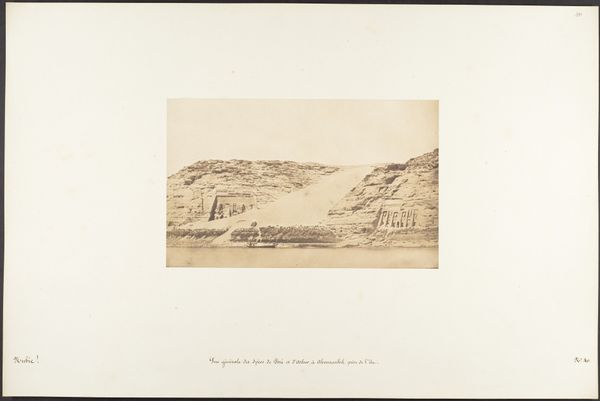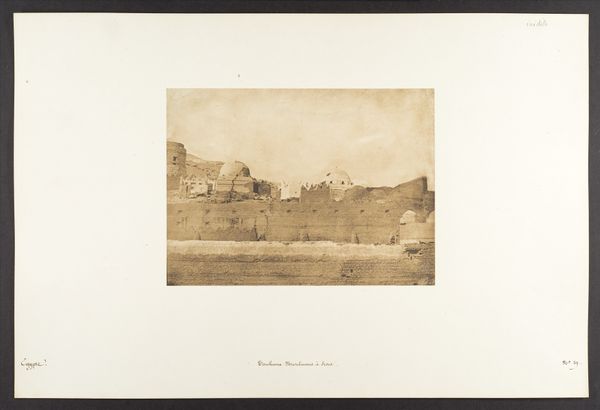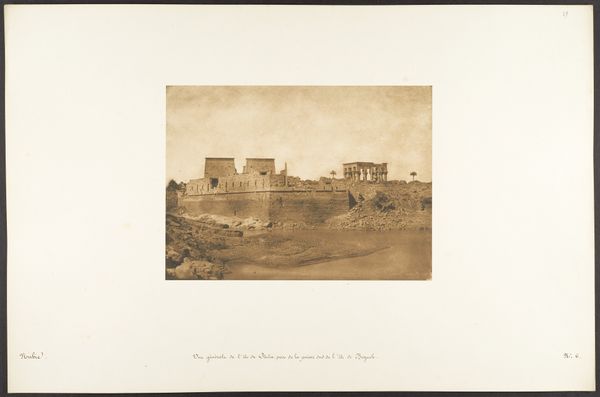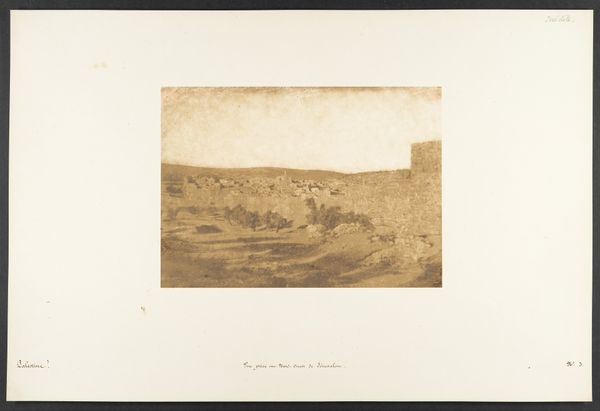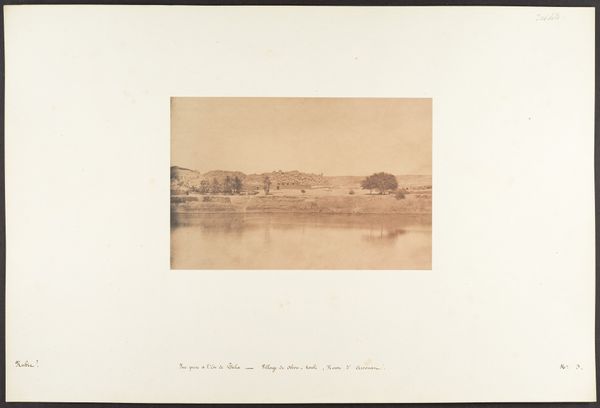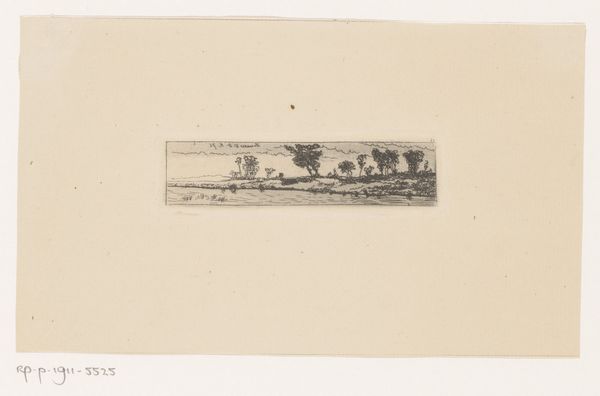
Vue générale des Ruines de Louxor, prise de l'Ouest (Thèbes) 1849 - 1850
0:00
0:00
photography, gelatin-silver-print, architecture
#
landscape
#
photography
#
ancient-mediterranean
#
gelatin-silver-print
#
architecture
Dimensions: Image: 5 1/2 × 8 7/16 in. (14 × 21.5 cm) Mount: 12 5/16 × 18 11/16 in. (31.2 × 47.5 cm)
Copyright: Public Domain
This is a photograph of the ruins at Luxor, taken from the west by Maxime Du Camp in the mid-19th century. It’s made using the salted paper process, one of the earliest photographic techniques. This involves coating paper with a silver salt solution, making it light-sensitive, then using a negative to create a print. The sepia tones and soft focus are characteristic of this process. Look at the way the light interacts with the grainy texture of the paper, giving the image a hazy, dreamlike quality. But don't let the aesthetic fool you. Du Camp was commissioned to make this image as a record of his travels in Egypt. Photography at this time was a cumbersome process, requiring bulky equipment and long exposure times. The photograph is more than just an aesthetic exercise; it's a record of a specific moment in time, and the beginning of photography's influence in shaping Western perceptions of other cultures. It's a reminder that every image is constructed, shaped by the materials, techniques, and social context in which it was made.
Comments
No comments
Be the first to comment and join the conversation on the ultimate creative platform.
